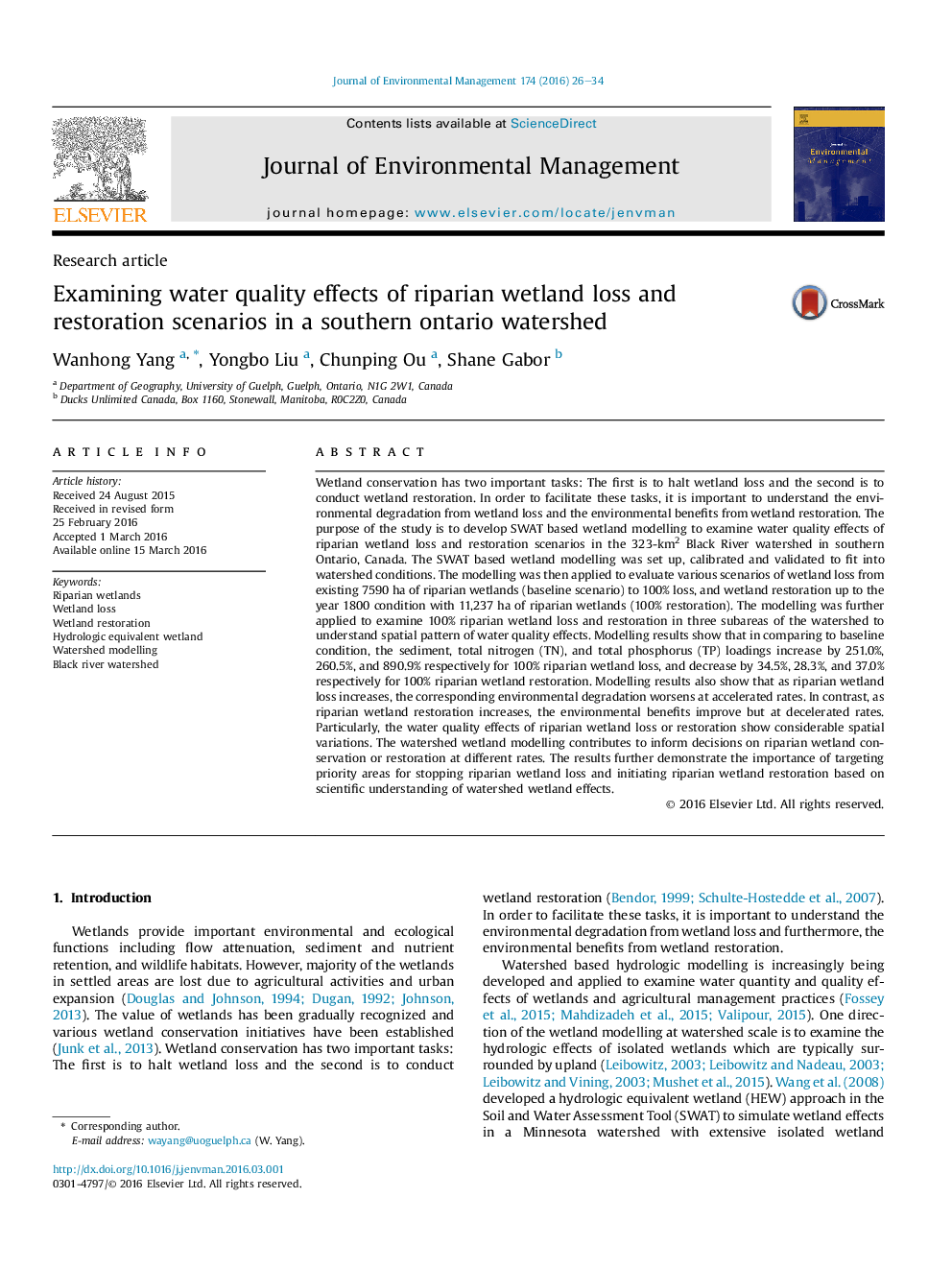| کد مقاله | کد نشریه | سال انتشار | مقاله انگلیسی | نسخه تمام متن |
|---|---|---|---|---|
| 1055389 | 1485238 | 2016 | 9 صفحه PDF | دانلود رایگان |
• The enhanced SWAT simulates the impacts of riparian wetland on flow, sediment, total nitrogen, and total phosphorus.
• Water quality degrades at accelerated rates from wetland loss but improves at decelerated rates from wetland restoration.
• It is important to target priority areas for stopping wetland loss and initiating wetland restoration.
Wetland conservation has two important tasks: The first is to halt wetland loss and the second is to conduct wetland restoration. In order to facilitate these tasks, it is important to understand the environmental degradation from wetland loss and the environmental benefits from wetland restoration. The purpose of the study is to develop SWAT based wetland modelling to examine water quality effects of riparian wetland loss and restoration scenarios in the 323-km2 Black River watershed in southern Ontario, Canada. The SWAT based wetland modelling was set up, calibrated and validated to fit into watershed conditions. The modelling was then applied to evaluate various scenarios of wetland loss from existing 7590 ha of riparian wetlands (baseline scenario) to 100% loss, and wetland restoration up to the year 1800 condition with 11,237 ha of riparian wetlands (100% restoration). The modelling was further applied to examine 100% riparian wetland loss and restoration in three subareas of the watershed to understand spatial pattern of water quality effects. Modelling results show that in comparing to baseline condition, the sediment, total nitrogen (TN), and total phosphorus (TP) loadings increase by 251.0%, 260.5%, and 890.9% respectively for 100% riparian wetland loss, and decrease by 34.5%, 28.3%, and 37.0% respectively for 100% riparian wetland restoration. Modelling results also show that as riparian wetland loss increases, the corresponding environmental degradation worsens at accelerated rates. In contrast, as riparian wetland restoration increases, the environmental benefits improve but at decelerated rates. Particularly, the water quality effects of riparian wetland loss or restoration show considerable spatial variations. The watershed wetland modelling contributes to inform decisions on riparian wetland conservation or restoration at different rates. The results further demonstrate the importance of targeting priority areas for stopping riparian wetland loss and initiating riparian wetland restoration based on scientific understanding of watershed wetland effects.
Journal: Journal of Environmental Management - Volume 174, 1 June 2016, Pages 26–34
